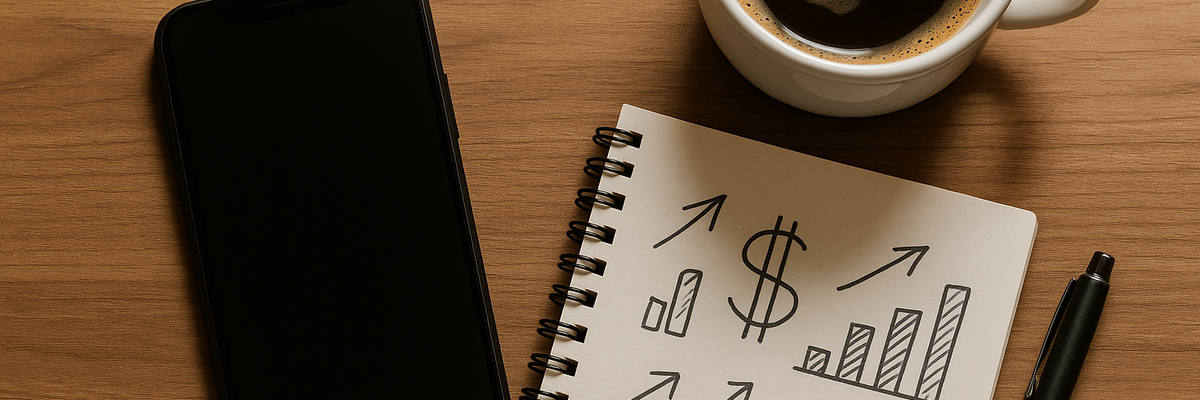Have $50K in Savings? Here's What to Do With It

Having $50,000 in cash stashed away feels awesome -- until you realize inflation is quietly nibbling away at its value. If it's just sitting in a regular checking account earning 0.01%, that money is likely hurting your finances more than it's helping.
Instead of letting it idle, you can easily put it to work in a low-risk way. Or plant the seeds for long-term wealth.
Here are three smart ways to put $50,000 to work, based on your goals.
1. Park some cash in a high-yield savings account
The first and easiest win is moving part of your money into a high-yield savings account (HYSA).
Some of today's top HYSAs are offering around 4.00% APY. (That's over 57X more interest than the national average checking account at 0.07%!)
If you put all $50,000 into an HYSA earning 4.00% APY, you'll earn over $2,000 in interest over the next year, with zero risk and full liquidity.
Most HYSAs also offer:
- FDIC insurance up to $250,000
- No monthly fees
- Easy access to your cash if you need it
You don't have to move the entire $50,000. Even shifting $25,000 can dramatically increase your passive income.
Start saving more today -- Explore all the top high-yield savings accounts here
2. Use a CD ladder to boost short-term returns
Next up is certificates of deposit (CDs). These short term investments let you lock in today's interest rates for a fixed time.
Right now, some of the best CD rates are around 4.00% APY or slightly higher depending on the term.
But here's a clever strategy… You can build a "CD ladder" by spreading your 50,000 across multiple CDs with staggered maturity dates. That way, you'll get better rates and regular access to your cash.
Here's an example of a CD ladder with $50,000:
- $10,000 in a 6-month CD
- $10,000 in a 12-month CD
- $10,000 in an 18-month CD
- $10,000 in a 24-month CD
- $10,000 in a 36-month CD
As each CD matures, you roll it into a new 3-year CD -- keeping the ladder going while locking in higher returns.
A great bank to consider with top rates right now is Synchrony Bank. It's offering 4.15% APY on 13-month, 19-month, or 60-month terms, which is a great range of options. Check out all of Synchrony Bank's CD terms and rates here.
3. Invest a portion for long-term growth
Keeping all $50,000 in cash might feel safe, but it's not always the smartest move. If you've already got an emergency fund (like $20,000 or so), why not put the rest into investments for retirement?
Over the long haul, investing your money will make it grow much bigger.
For example, let's say you take $20,000 and put it into a low-cost index fund, like the S&P 500. If it averages 8% a year (which it has historically), that chunk of money could double, triple, or even 10X over time depending on how long you leave it invested.
| Time Invested | Future Value |
|---|---|
| 5 years | $29,387 |
| 10 years | $43,178 |
| 20 years | $93,219 |
| 30 years | $201,253 |
Dropping a big chunk of savings into the stock market all at once can feel terrifying. I've done it a few times and it's definitely nerve wracking!
If you're not ready to go all-in, another option is dollar-cost averaging. This basically means investing smaller amounts regularly over time. For example, instead of dumping $24,000 into index funds you could invest $2,000 per month over 12 months.
It's a smart way to ease in and smooth out the market's ups and downs.
Even better, you could use an automated investing app or robo-advisor to help you invest. These platforms help you stick to a plan without second-guessing your decisions.
Don't let $50K sit idle
You worked hard to save $50,000 -- don't let it sit on the sidelines.
With a few smart moves, that money can start generating passive income, growing for the future, and supporting your bigger financial goals.
You don't have to choose just one path, either. A mix of savings, CDs, and long-term investments can give you the best of all worlds: safety, flexibility, and real growth.
Our Research Expert
We're firm believers in the Golden Rule, which is why editorial opinions are ours alone and have not been previously reviewed, approved, or endorsed by included advertisers. Motley Fool Money does not cover all offers on the market. Motley Fool Money is 100% owned and operated by The Motley Fool. Our knowledgeable team of personal finance editors and analysts are employed by The Motley Fool and held to the same set of publishing standards and editorial integrity while maintaining professional separation from the analysts and editors on other Motley Fool brands. Terms may apply to offers listed on this page. APYs are subject to change at any time without notice.


